- Learning time
- minutes
- First play time
- 40 minutes
Long Shot: The Dice Game
Designed by: Chris Handy
A shorter, more compact version of the predecessor Long Shot, the dice version plays in a fraction of the time and packs into a box a quarter the size.
The story remains the same: players are betting on horses, buying horses, manipulating horses and generally up to shenanigans in order to end the game with the most money. All eight horses line up on the starting line and will race once around the track: when three horses have crossed the line again, the game ends.
On each turn, the starting player rolls two dice: one tells you which horse will move, and the other how far. You also check on the card for the horse, which will give secondary movements: at least one (often more) other horse also advances a single space. Then everyone takes a single action. Here’s what they are:
You can bet on the just-rolled horse, or buy it (if nobody else has already). Bets are tracked on your own wipe-board along with how much cash you have. Buying the horse gets prize money if it finishes in the top three, as well as an in-game or end-game bonus for ownership.
You can cross off the helmet or jersey of a matching horse: helmets allow you to bet on that horse later than is usually allowed (but before it crosses the finish line) and helmets allow you to generate secondary movement on the horse’s card for a horse of your choice. Having a matching helmet and jersey is also worth a bonus $5 at the end of the game.
Finally you can cross of the just-rolled horse’s matching number on your concessions grid. Whenever you complete a row or column on the grid, you get to take a bonus – more cash, a free bet, ownership of a horse, or moving horses forward or back around the track.
Once everyone has taken an action, the dice are passed clockwise and it’s a new turn. This continues until the game-end is triggered, then everyone counts up cash to discover the winner!
The guru's verdict
-
Take That!
Take That!
A reasonable amount. Your sure-fire winner of self-owned horse about to cross the line might find itself moved back several spaces!
-
Fidget Factor!
Fidget Factor!
Pretty low - roll dice, move horses, everyone takes a single action. It's breezy.
-
Brain Burn!
Brain Burn!
But it's not without decisions, as you can go heavy on bets, try to push a single horse you own or go for a spread (pun intended) of tactical engagement. It tends to end fairly chaotically, but not without any control at all.
-
Again Again!
Again Again!
It's brief and, once you understand the actions, speedy too. There's lots of randomisation both in the dice and how player decisions determine future actions.

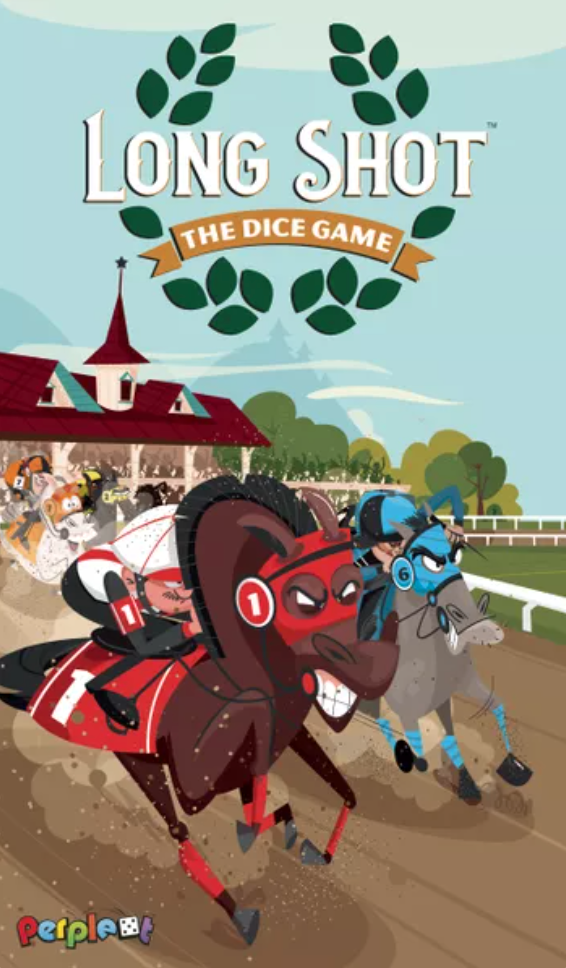



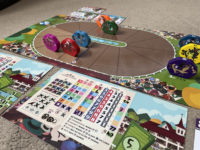


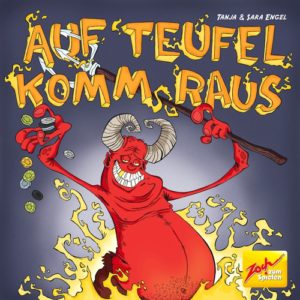


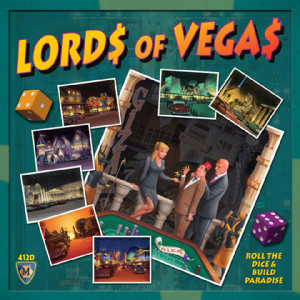
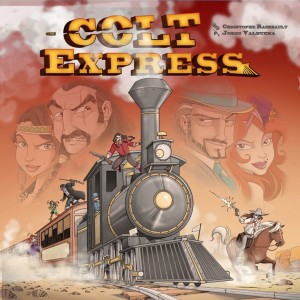
Sam says
For an allegedly brief and breezy thing Long Shot can seem slightly overwhelming when you first look at your player board, which lands somewhere between a spreadsheet and a firework display, and offering you a number of actions that might seem 3 or 4 too many for a simple betting game. But the numbers swim into focus (multipliers for your winning bets) and the actions make sense by the end of your first (maybe second) play, and it's worth riding Long Shot again (see caveat below) because it does a few things rather well: different strategic approaches, different tactical decisions, and the satisfying moments of triggering bonuses from your concessions. The down-side is that the more players you have, the more staccato the game becomes, as pauses to consider are lumbered with pauses to activate and, the closer the horses get to the finish line, the more the game feels chaotic, with horses moving backwards from various concessions being triggered into life. We've rated it good here because for 3 or 4 we think it is. But we'd cap it at that, otherwise it turns into a bit of a grind.